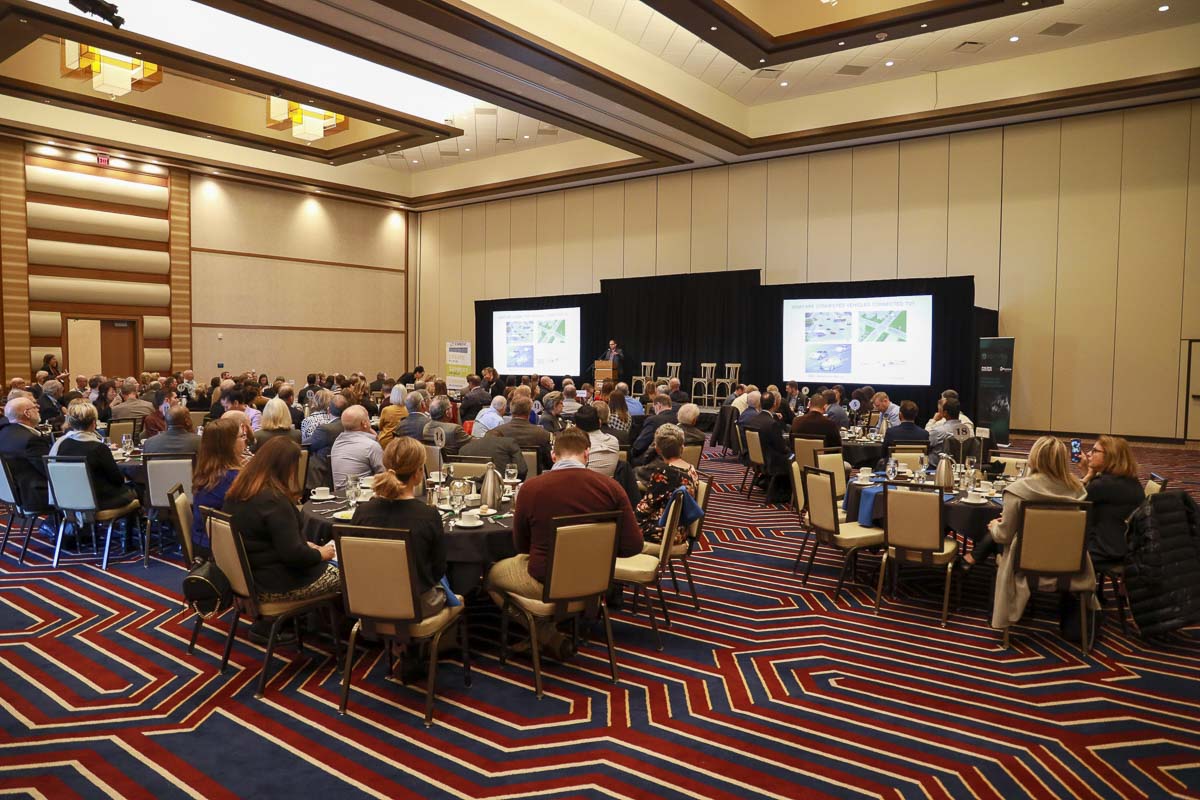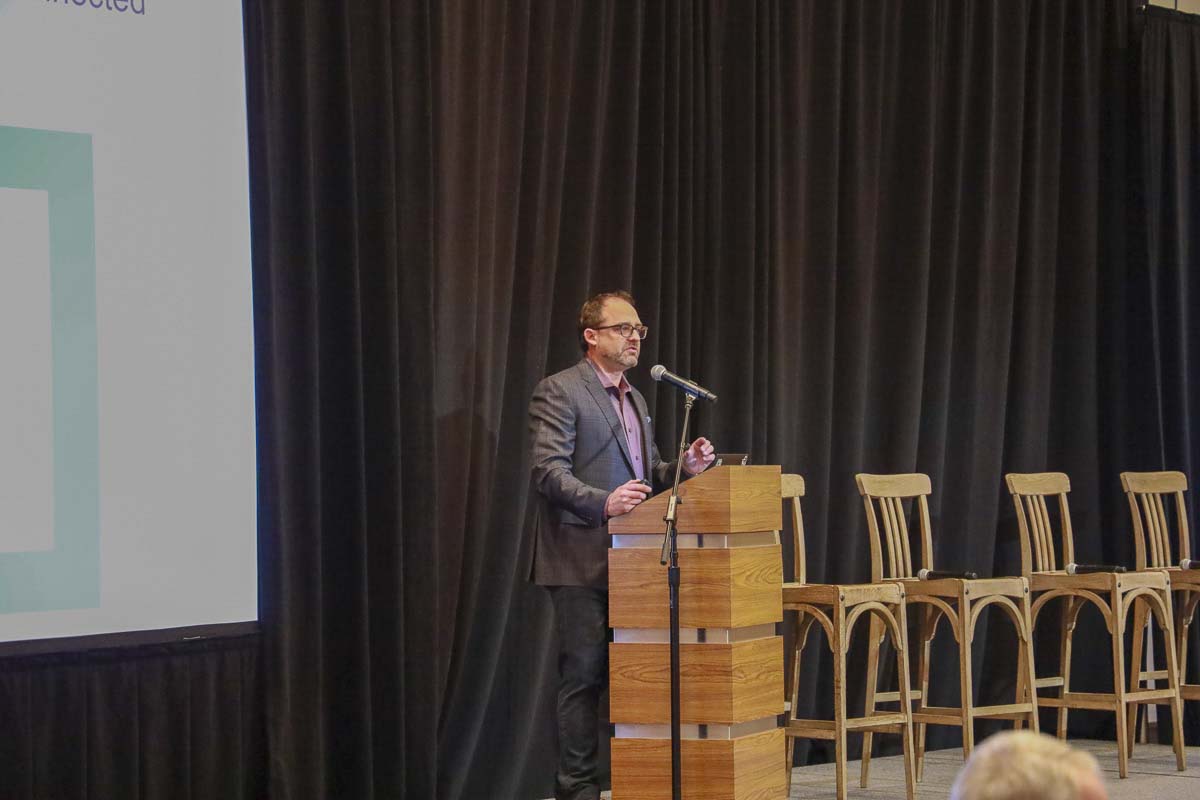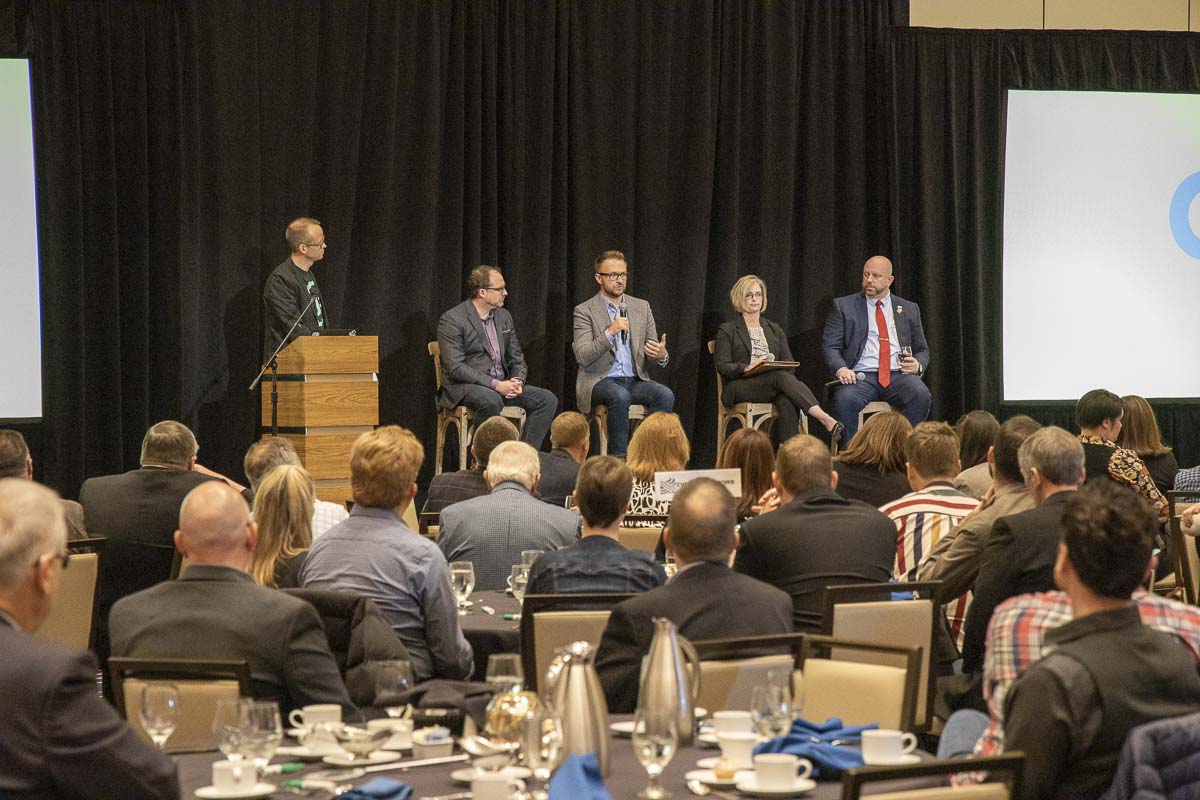A number of area experts discussed electric vehicles, self-driving cars, and the Interstate Bridge project
RIDGEFIELD — Elected officials and other economic leaders in the region gathered this week inside the Event Center at ilani casino for the Columbia River Economic Development Council’s fall luncheon. This year’s event featured a keynote address from Adrian Pearmine, national director for smart cities and connected vehicles for DKS Associates, as well as a Q&A panel featuring Pearmine, C-TRAN CEO Shawn Donaghy, and 49th District Senator Annette Cleveland (D-Vancouver).

In his keynote, Pearmine outlined some of the potentials and pitfalls of our transportation future.
In one example, he said as we transition to more electric vehicles, including scooters, bikes, and mass transit options, there will be challenges with providing sufficient power to charge all of these devices.
“We’re all going to have to work together in ways that we haven’t done in the past to support all of those electric vehicles,” said Pearmine, referencing power distribution companies, regulators, and those that own the rights of way.
Another challenge involves the drawn out transition between vehicles of the past, controlled entirely by humans, and future self-driving cars.
“We’re going to be in this transition phase for decades really where some of the cars might be connected, some of them are not connected,” said Pearmine. “And we’re going to have to continue to make investments in infrastructure that are detecting our pedestrians or protecting our bikes, and informing cars that are connected and informing drivers in cars that are not connected.”

Currently, most self-driving cars use an array of sensors, such as side-firing radar and cameras, to “see” their surroundings. But, says Pearmine, those sensors won’t be sufficient in the world of the future. Instead, the environment will need to be able to communicate with vehicles in order to let them know vital information further in advance.
“We’re still limited to just that bubble of what it can see with those sensors. It’s when that car turns that corner,” Pearmine says. “That’s why I want to get the connected piece back into the automated piece. So that it’s getting information that there’s a pedestrian in that corner that it’s about to turn, that it knows that, two miles up the road, there’s a construction zone and they’ve closed the right hand lane, and that there’s an icy patch half a mile ahead.”
The convergence of those technologies, the sensors in vehicles and in the surrounding infrastructure, is what Pearmine calls the “third revolution” of mobility.
“Hopefully, as we enter this third revolution, we can decide to design the cities for our citizens and make the technology work for us,” he says. “That’s on all of us here, on a policy level, and from an engineering level.”
While the cities of the future may include technology that allows people of all capabilities the ability to get around efficiently and inexpensively, Pearmine cautions that major infrastructure projects like a new Interstate Bridge on I-5 will still need to move ahead.
“None of that stuff I was talking about is going to be here tomorrow in such a significant way that congestion is going to go away,” Pearmine said.
Speaking of the Interstate Bridge, during the expert panel portion of the lunchtime event, Senator Cleveland noted that there will be a meeting Friday of a 12-member bi-state commission, with the goal of resurrecting a project to replace the century-old bridge over the Columbia River.

“I think that we’re in a place right now of great strength, given that there is consensus around that goal,” said Cleveland. “And the federal government, as well, has recognized the progress that’s going on here, and has recognized that there seems to be momentum and consensus building and as a result granted an extension of the repayment of federal funds that was required from past efforts.”
The official recognition of the bi-state commission by Oregon lawmakers represents a watershed moment in the efforts to revive the bridge replacement efforts. In 2013, the Oregon legislature approved $450 million in funding towards the $4 billion project, but Washington lawmakers balked at the cost and backed out of the deal. During a first meeting of the group last December, Oregon legislators attended in an unofficial capacity, and largely spoke of the rift that remained as a result of the funding issues from five years earlier.
During the 2018 legislative session, the Washington State Department of Transportation received funding to reopen an office in Vancouver with the goal of studying previous reports from the failed Columbia River Crossing project to see how much could be salvaged during a new project.
The agreement by the federal government to extend a deadline to repay over $100 million in funding for that project was based on recognition that the two states come together and show progress on revisiting the issue of the bridge.
As for future transportation changes, the experts at Tuesday’s panel agreed that services like Uber and Lyft, as well as trucking companies, will likely be the first to fully embrace self-driving vehicles.
To get there, they warned, will require Herculean efforts on the part of private companies, local and state governments, and the federal government, to create an environment in which innovation can thrive.
In many cases, it could be another few generations before we can get behind the wheel of a car and have it take us where we want to go, while we read a book, watch a movie, or talk on the phone with a friend without fear of being pulled over by the police.




